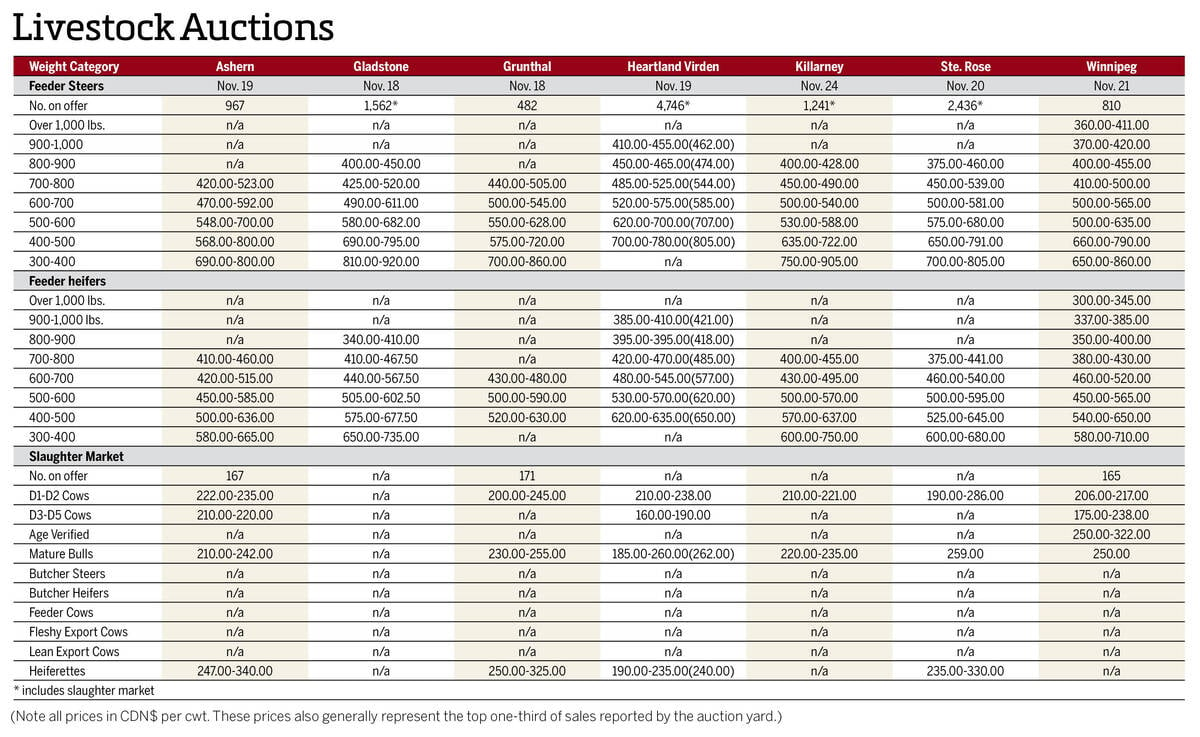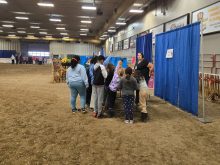Glacier FarmMedia – Every day hundreds of thousands of animals are transported across Canadian highways without mishap, but every so often, there is an unfortunate accident with animal deaths and injuries.
If the accident happens in Alberta, there is an emergency network to draw on—established because of the huge numbers of cattle transported to feedlots and packing plants. Elsewhere in Canada and even in Alberta, there’s an important role for producers and veterinarians who are near the scene of these accidents.
Just as someone with medical training may come across a vehicle accident, you as a producer have more experience than anyone else with handling and containing animals. You’re also likely to know who has a livestock trailer nearby or know other things that may be necessary to help animals in need.
Read Also

Manitoba cattle prices – Nov. 24
Cattle prices from Manitoba’s major auction marts for the week of Nov. 18-24.
Let me be clear. In an accident or roll over, call 911 before doing anything else. That gets first responders to the scene. There is a chain of command for getting things done and that always comes down to firefighters. They direct the police, paramedics and other personnel so they do their jobs pertinent to each case.
The Alberta system
In Alberta, if there are livestock involved in an accident, the emergency livestock handling equipment trailers are requested. There are 18 locations for these in the province and firefighters in rural locations know where they are.
The trailers come with the necessary panels, emergency lighting and other necessities to make the salvage operation easier and safer.
Alberta has also trained many first responders, and some producer groups have teams trained in emergency preparedness. J. Woods Livestock out of Blackie, Alta., gives courses, which also deal with helping animals in fires and in other scenarios.
As you can imagine, animals in these situations may not act normally. They are stressed so human safety is a huge consideration. J. Woods Livestock has researched the best way to safely extricate cattle from a rolled cattle liner without excessively damaging the liner. It starts with the fire department and tools such as the jaws of life, spreaders and what I call the huge metal snips. Firefighters are the best trained in this scenario.
Livestock in an emergency
Unless there is a fire, extrication for cattle now involves setting up secured panels that guide animals into another trailer. Cattle at large, especially at night, pose a real danger.
With today’s modern technology, firefighters can find people trained in emergency preparedness. Even if they can’t attend the scene, expertise over the phone may help.
In provinces that don’t have emergency trailers, responders need local expertise and livestock trailers. This is where your help as an experienced producer could be invaluable.
One must always follow the chain of command and then gather needed expertise locally. This may be in the form of the local veterinarian, producer or extension staff.
I know of one incident in which a large animal veterinarian, along with a vet student, came across a rollover of a load of broiler birds. They stayed at the scene and worked with the first responder team to get it sorted out.
We all know accidents with livestock are a nightmare scenario, so anyone with livestock handling experience may be a first responder’s best resource, but don’t do anything rash. Keep local contacts, including the veterinary clinic, in your phone.
I’ve only had to help out a couple of times, in a minor way, but it’s an advantage to know the first responders, who are excellent to work with. However, they must deal with human safety first before working on animal safety and that is totally understandable.
The farm animal care groups in each province are also good resources and they often have an alert line. In Alberta, most trailers are located at either firehalls or county offices so they are easily accessible.
The Alberta Farm Animal Care Council is willing to share information with other farm animal groups in Canada about the makeup of the emergency trailers and the logistics and infrastructure necessary.
Livestock auction facilities in the country are other resources that may have trained personnel or facilities one could utilize. The same can be said for groups that handle other species. Trailers would have a fit for pigs in Manitoba or chickens in British Columbia, as an example .
Those of us involved in the livestock sector – producers, veterinarians and veterinary technicians – should be ready to help.
















